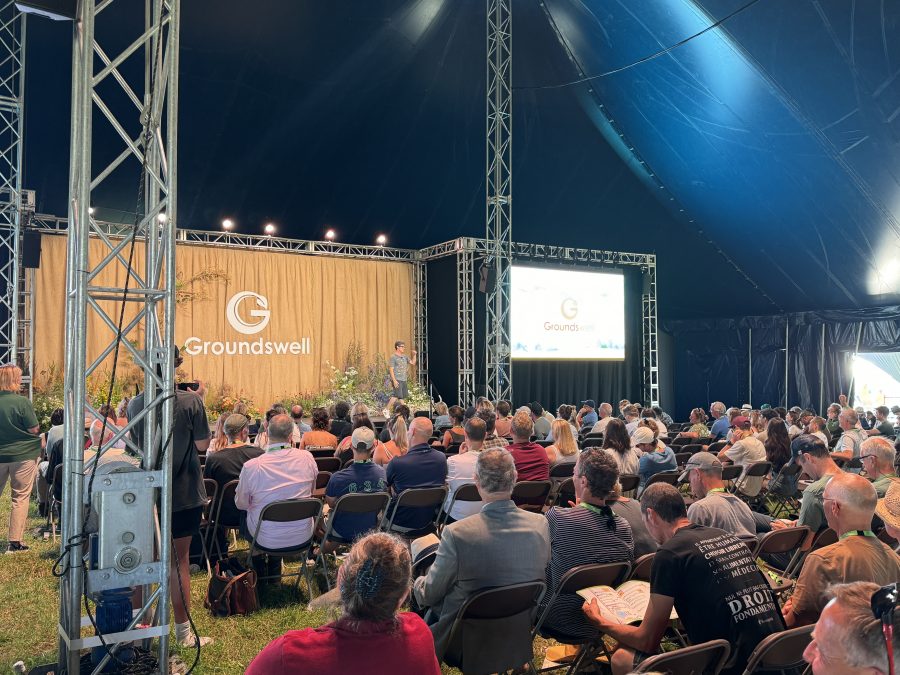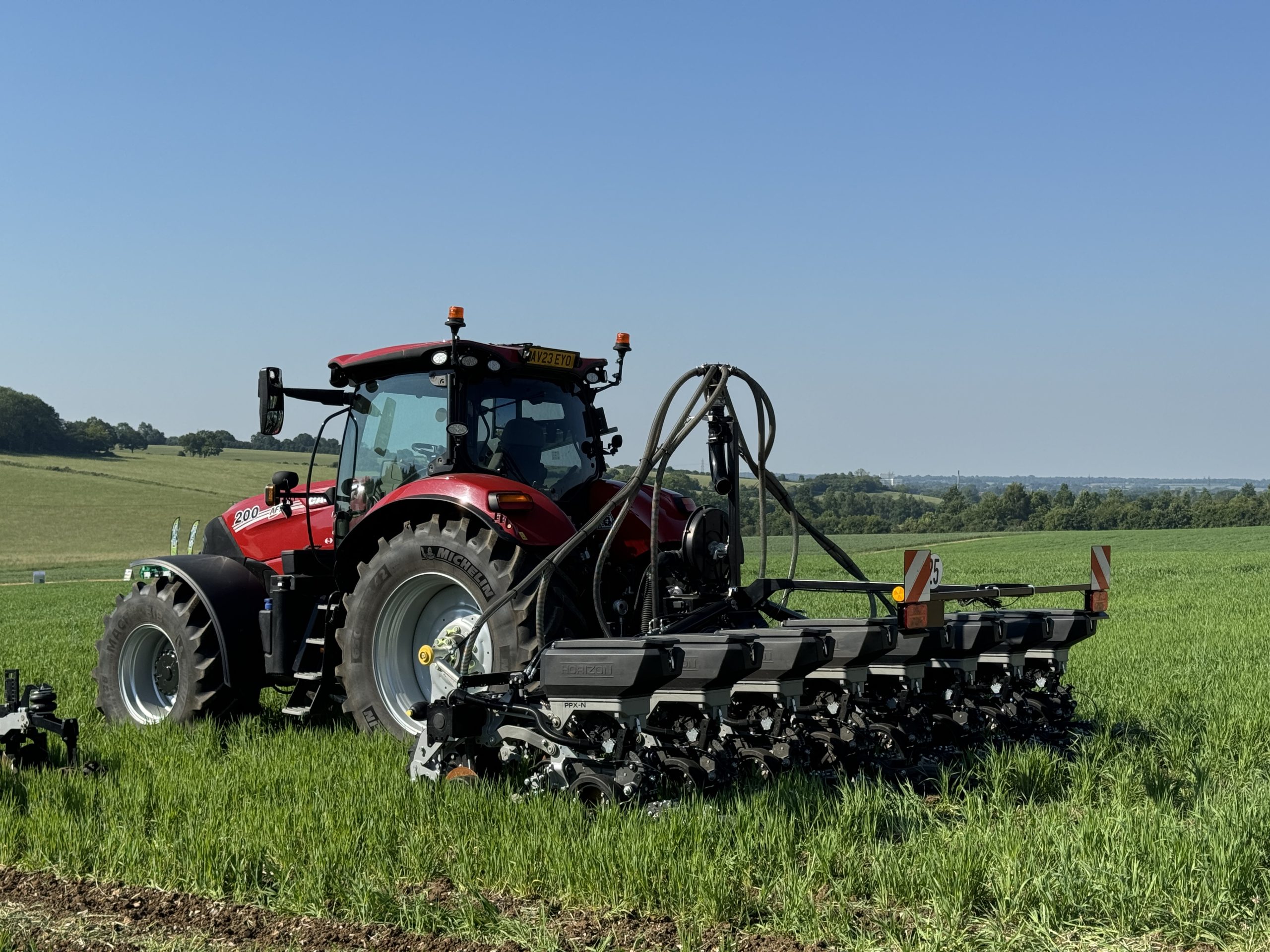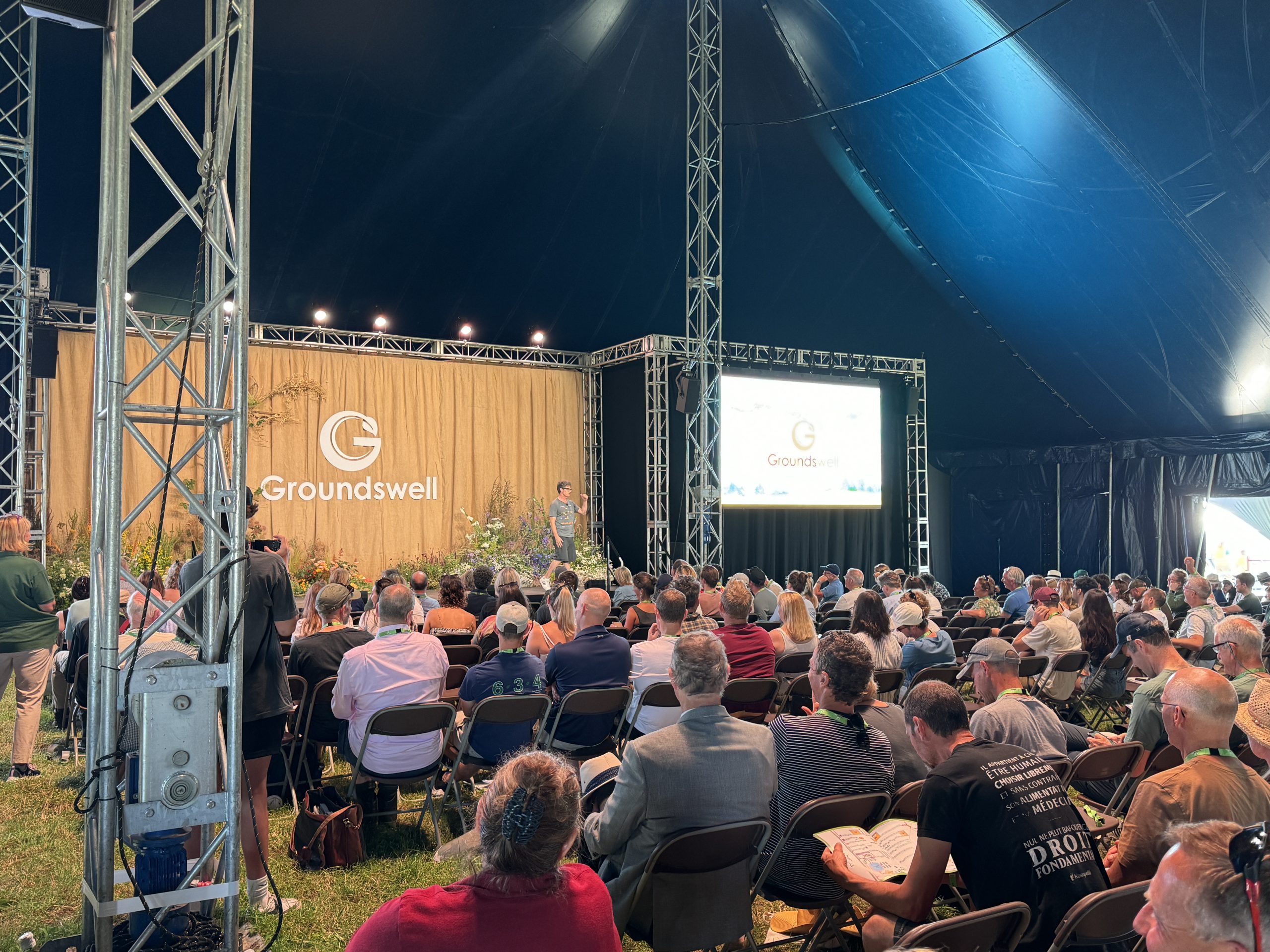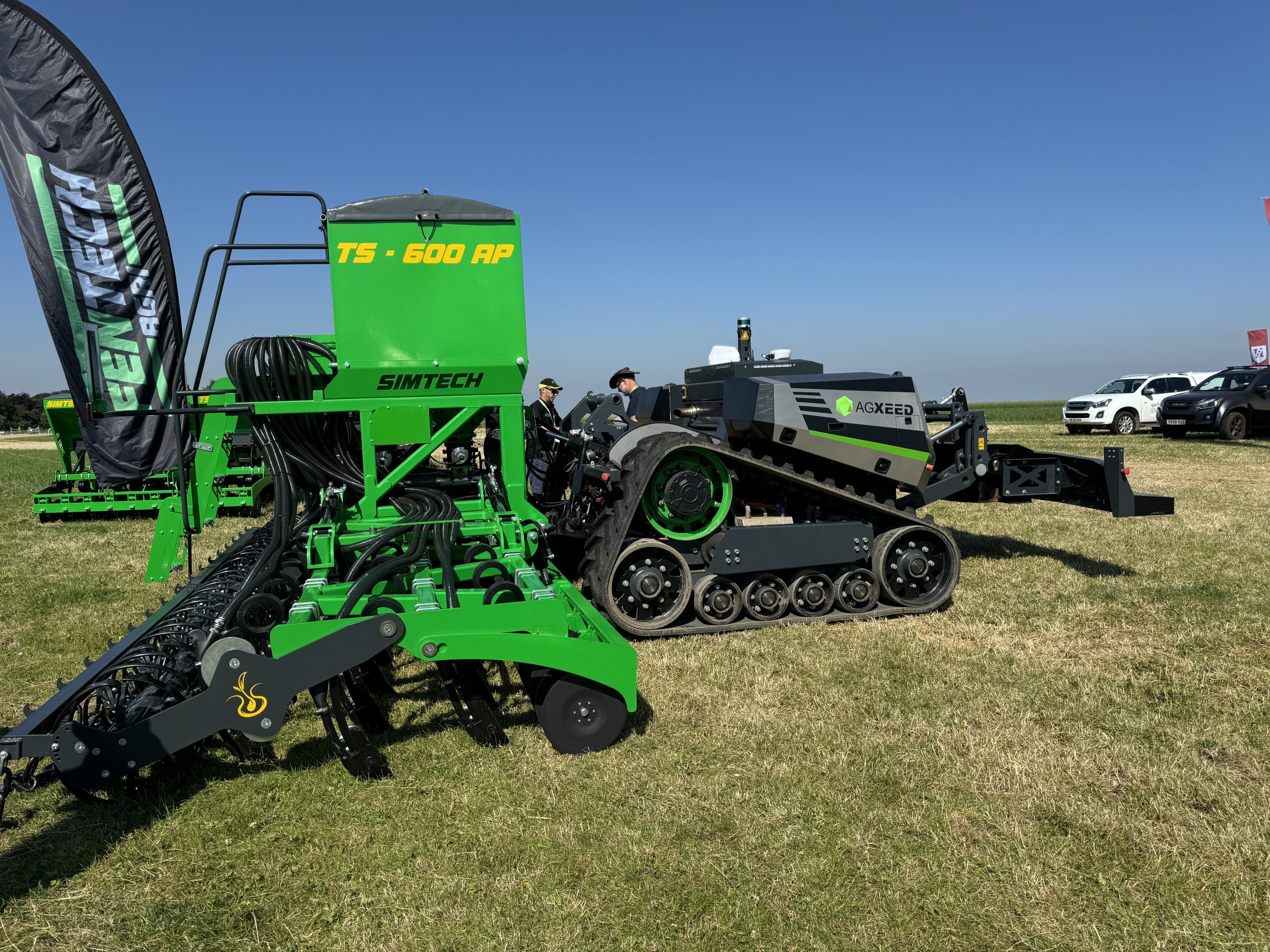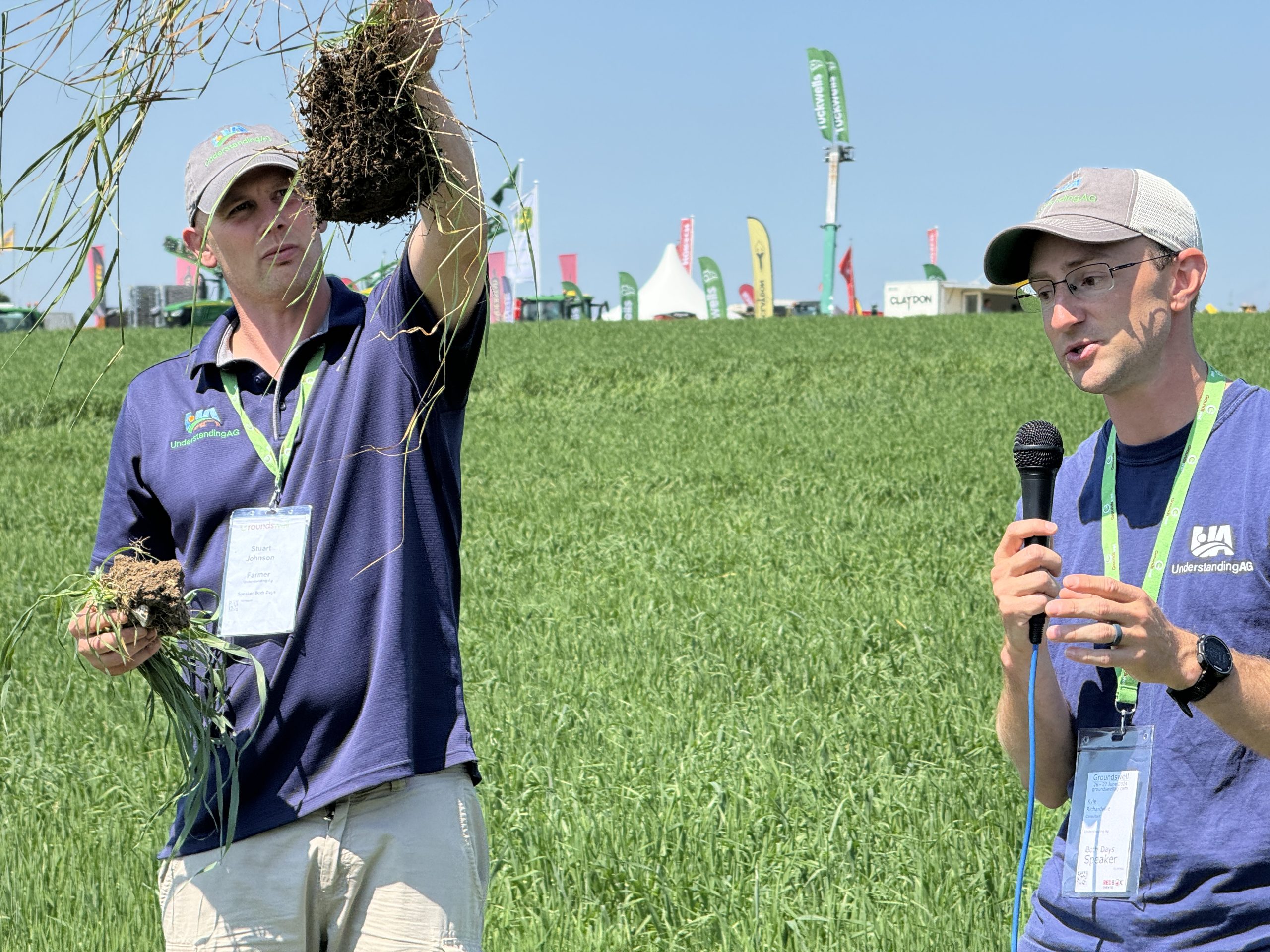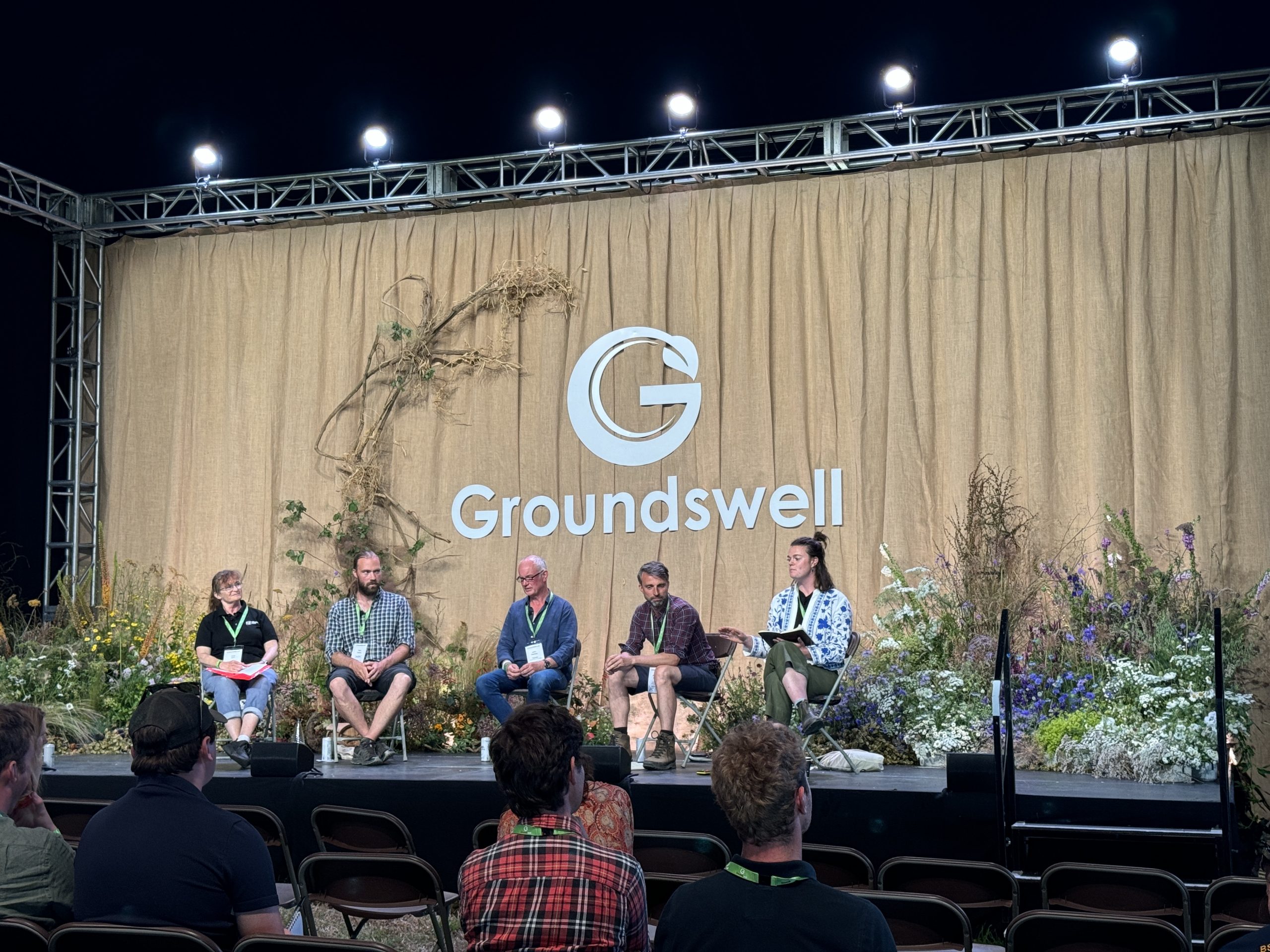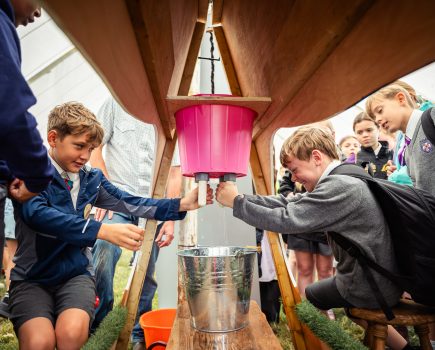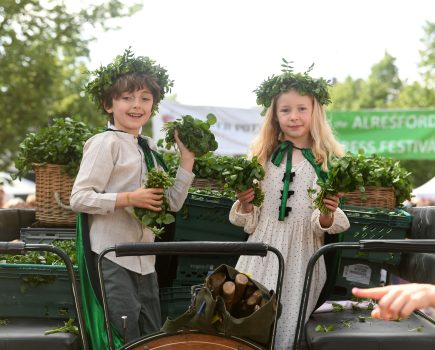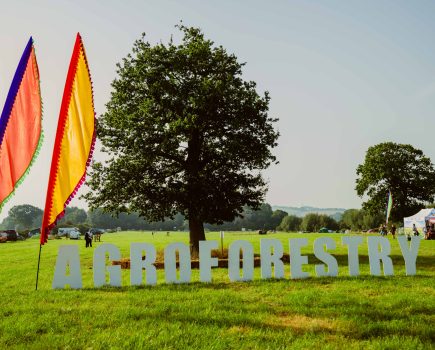With the regenerative farming movement becoming more mainstream, South East Farmer’s Nigel Akehurst visited Groundswell Farming Festival at Lannock Manor Farm, Hertfordshire, to learn from the 300 plus speakers and other like-minded farmers.
Despite news of falling farm incomes and tractor registrations down 13% on a year ago, the mood at the UK’s largest regenerative farming event was positively upbeat.
Now in its eighth year, Groundswell attracted more than 8,000 visitors to the two-day event, founded and run by the Cherry family. Groundwell has rapidly grown from a small gathering of a few hundred mavericks in 2018 to one of the biggest farming events of the calendar year, demonstrating just how mainstream the movement has become.
I was amazed by the sheer number of young people who helped create an atmosphere of enthusiasm and positivity in a sector known for its long hours, unpredictable weather and mixed financial rewards.
Thankfully perceptions are changing, and a growing community of regen farmers and associated businesses in the UK is rewriting the narrative through regenerative practices and nature-friendly farming.
Keeping the thousands of delegates well fed and watered was a plethora of regenerative food and drink traders (many of them farmers themselves) serving Pasture for Life meat, heritage grain pizza and regenerative beer and cider.
My personal favourite was Paddock Farm, where an entire Hereford beast was cooked over fire, using what could only be described as an impressive bit of kit. A team of chefs worked through the night and was well rewarded for its efforts. At £14.50 a plate, they had sold all 800 servings by 2pm on the first day, grossing £11,600. Not a bad return, I thought.
All the main farming and wildlife organisations were represented, including a large DEFRA stand offering advice on SFI (though due to pre-election ‘Purdah’ they weren’t able to answer some of my questions).
Natural capital companies were present in even greater number than last year. There were software and tech companies, a few machinery dealers (lots of expensive looking no-till drills and a dystopian looking autonomous tractor) and a few clothing brands.
The diversity and number of sessions on offer at Groundswell is overwhelming. Thankfully the session guide is published a couple of weeks in advance, so I was well prepared.
Day one
Having travelled up on the Tuesday evening to skip the rush hour traffic and grab a good spot in the campsite, I grabbed some breakfast and sat down in the Big Top Main Stage to see the session on Roots So Deep, a new documentary. American director Peter Byck was holding court, sharing clips from his series about adaptive cattle farmers and their conventional neighbours across the fence (along with a group of maverick scientists conducting ground breaking research).
The films, which are part of a $10 million research project in the South East USA, asks: “Can this simple change in grazing practice help farmers get out of debt, restore depleted soils, rebuild wildlife habitat and draw down huge amounts of carbon?”
Next, I headed to the session on Small Abattoirs and Local Meat, a topic of vital importance to livestock farmers across the UK, many of whom, like me, rely on a viable network of small abattoirs and butchers to keep their businesses afloat.
The session shared some positive examples of community groups saving their local abattoirs (www.longcomptonabattoir.co.uk), and, in the case of the Isle of Wight, setting them up. We also heard updates from the Abattoir Sector Group and DEFRA on available funding. The panel was optimistic about the future, noting an incoming Labour government had pledged that half of all public sector food would be local and sustainable.
After lunch, I made my way to The Understanding Ag field walk with 2023 Soil Farmer of the Year Stuart Johnson and Kyle Richardville. I find these practical workshops so helpful, especially as they highlight the difference in soil structure (and smell) between the undisturbed soil next to the hedgerow and the lifeless soil in the middle of the arable field. Note to self – keep a spade handy at all times.
I then joined a Managing Farm Woodlands walk, with advisors from the Woodland Trust offering tips on how to identify key areas when bringing farm woodland back into management, including threats (like ash dieback) and potential opportunities.
My last session of the day was Reclaiming the Regenerative Narrative: A Writing Workshop, which featured an expert panel of authors, journalists and publishers including Sarah Langford (Rooted), Graham Harvey (Carbon Fields), Zoe Colville (The Chief Shepherdess: Lessons in Life, Love and Farming), Muna Reyal from Chelsea Green Publishing and Will Evans, a farmer and columnist for Farmers Weekly.
Day two
After a late night sampling regenerative beers and catching up with old friends, I arrived at the 9am session on Revenue & Resilience: Stacking Environmental Practices and Payment Schemes, where a diverse panel of experts debated the value of moving towards nature focused farming.
South Oxfordshire farmer Tom Knowles shared the payments he claims under the Sustainable Farming Incentive, showing how he had exceeded Basic Payments income with options that fitted their system and created greater resilience on the family farm. Including educational visits, he forecast a 2024 SFI per hectare payment of £480 (£419 without the visits), compared to a BPS equivalent of £220 per hectare.
Digby Sowerby, operations officer for Natural Capital Advisory, provided a quick overview of the natural capital markets, from biodiversity net gain and nutrient neutrality to investors, trade credits and voluntary and future compliance markets. Were it not for the fact that I am involved in running a farming cluster group on the Pevensey Levels and hoping to apply for the next round of Landscape Recovery, I would have struggled to keep up with the complexity of it all.
Moving on, I attended the Building Enthusiasm and Building the Evidence Base for Regenerative Agriculture session, which highlighted how regen ag has made farming exciting again and how more farmers can be encouraged to transition. Topics included promoting the farming lifestyle and exploring different models of land access on small farms with no natural succession.
I was pleased to hear that more investment is going into promoting regen ag, with representatives from Foodprint Nordic having recently secured millions of euros to spread the word through their Top 50 Farmers programme due to launch this autumn.
Between sessions I nearly bumped into the Prince of Wales (flanked by some low-key security), checking out the rainfall simulator. It’s an eye-opener – search ‘Rainfall Simulator Groundswell’ to watch it on YouTube.
Last but not least, I attended Regen at Landscape Scale – Partnerships, Opportunities and Pitfalls. The aim of the session was to help delegates understand how working across a whole landscape or catchment can work. It featured the Weald to Waves project, with representative Molly Biddell explaining their aim to create a 22,000-hectare ribbon of connected land from a sea kelp restoration project in Sussex through to ancient forest in the High Weald.
One session I missed but have since watched online was a discussion between Andy Cato of Wildfarmed and Henry Dimbleby on transforming the food landscape at scale.
A member of the audience asked Andy: “How do you encourage the next generation to go into farming when it isn’t an awfully attractive industry right now, particularly coming from a conventional stage?”
He replied: “If farmers were working in an environment where they were able to grow nutrient dense food in nature rich landscapes – who doesn’t want to do that? It’s the best job in the world – lets create a situation where that can happen.”
For more like this, sign up for the FREE South East Farmer e-newsletter here and receive all the latest farming news, reviews and insight straight to your inbox.

